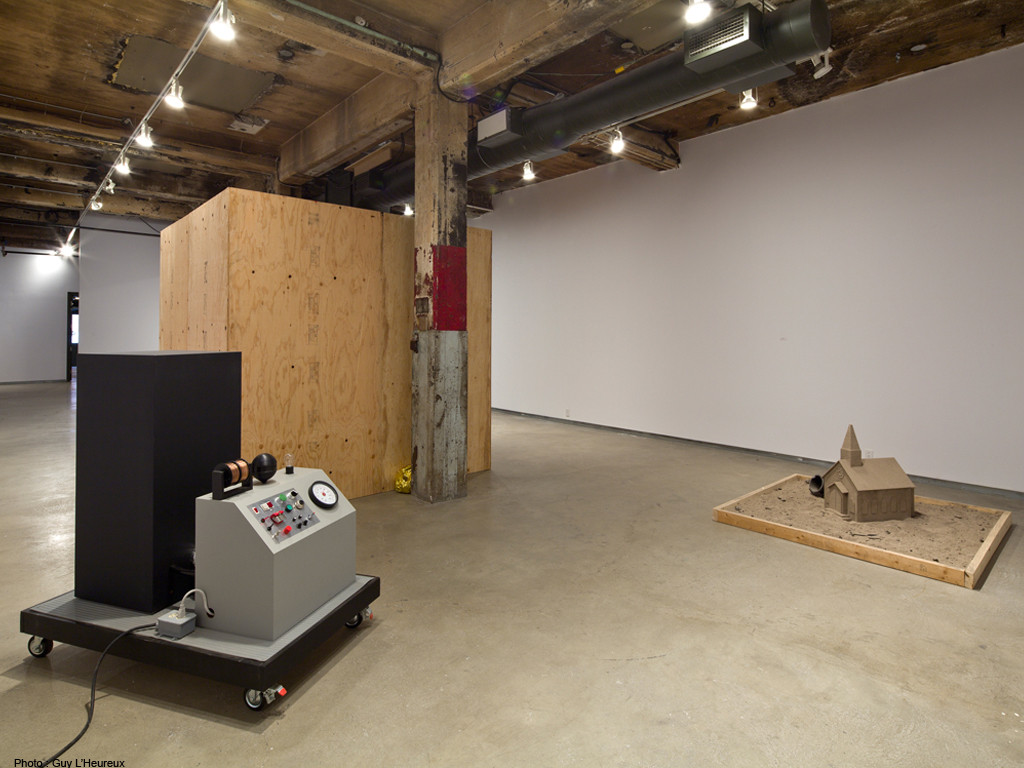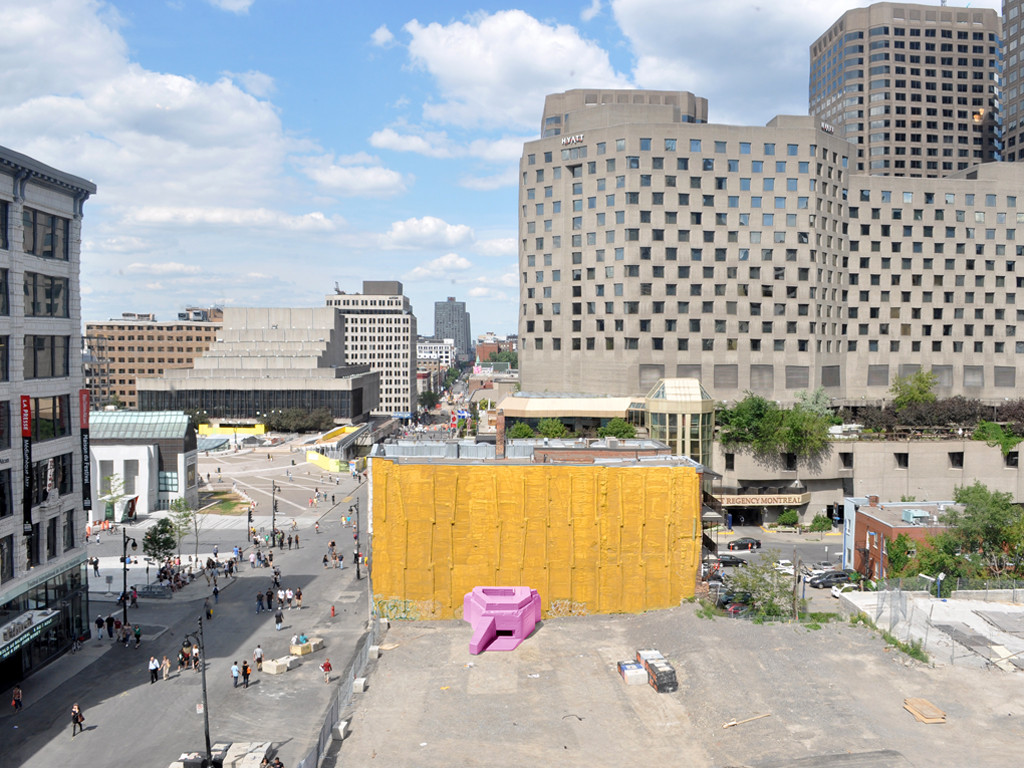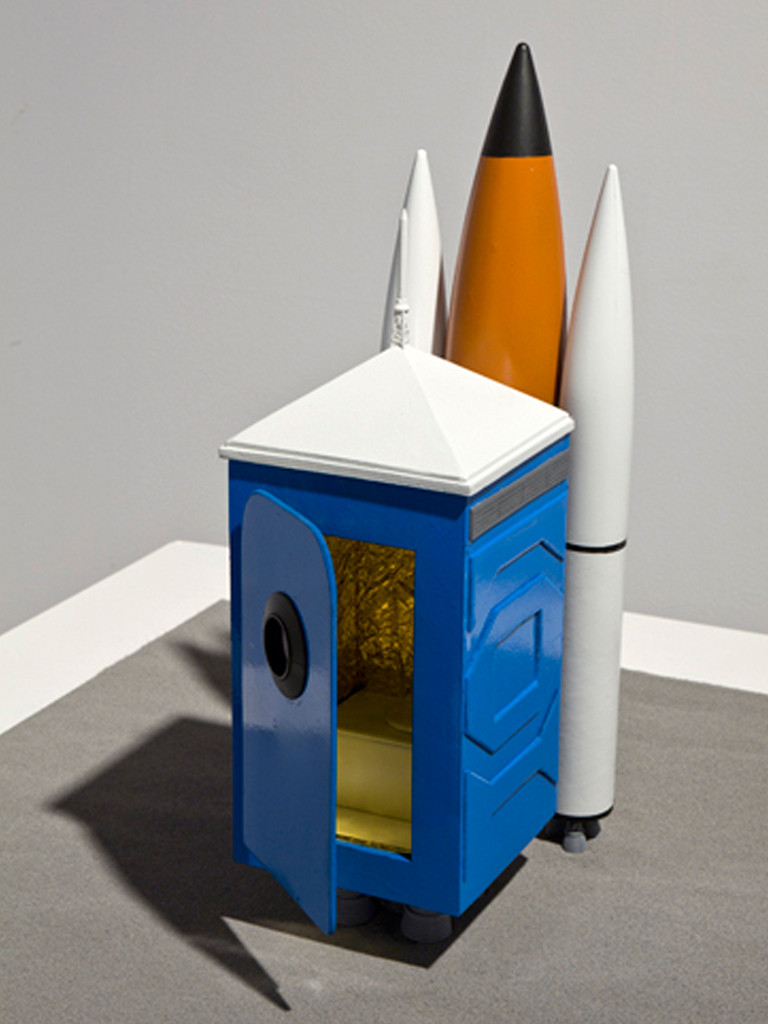






A British physician named Paul Dirac formulated, in 1929, a hypothesis on the existence of anti-electrons, thus introducing the notion of anti-matter: all the constituents of matter— protons, neutrons, electrons— correspond to the equal and opposite mass and charge of anti-matter— anti-protons, anti-neutrons and positrons. From this scientific premise, some particularly fertile minds were quick to ignite and spread the idea: "And if our world was not unique, if there existed somewhere in the universe a mirror world, an anti-world?”
In interpreting freely and without any scientific rigour the concept of anti-matter, Mathieu Latulippe has built upon its framework in the exhibition Contre-faire: entre construction et anti-matière (Made-up/Counterfeit: between construction and anti-matter). Revisiting the genre of science fiction in new ways, it explores the world of "anti" and negativity with humour and irony. The works presented (objects, models, photographs, posters, etc.) play with dualities, derail the mind, and challenge our understanding of the world.
Doing the Opposite
Major work is under way behind the closed-off walls of a building site from which construction noises can be heard, however a building will not result from this activity. For if Mathieu Latulippe works with real space within the framework of this exhibition, it is to deconstruct our mental space, seeking to open up and challenge our conceptual schemas. He multiplies contradictions and misinterpretations by combining, in one work, two worlds that seem at first opposed. While in the world of antimatter negativity refers to the intangible, absence, the abstract, the invisible and the intellect, construction uses the tangible, the presence of matter, the visible and manual. Micro-chantier (Micro-site) is a testimony to this, "Much ado about nothing" says the artist about the centrepiece and keynote of the exhibition that thwarts the viewer's expectations— it creates absurd, inoperative situations. The models and other elements of the installation become supports to frame such ideas and improbable situations, allowing the imagination to unfold.
The Maquette pour la réalisation d’un édifice en plastique biodégradable (Model for the creation of a building out of biodegradable plastic), explores the trend towards ecological behaviour taken to the extreme, while the Machine à ondes négatives (Negative airwaves machine) is a far-fetched invention that plays on our propensity to believe in superstitions despite our considerable scientific advances.
Negativity
More than a simple exercise in contrasts, the focus on negativity is of significance as it challenges our habitual preoccupation with "everything positive" that pervades the different spheres of our lives (personal, political, economic, etc.). Multifaceted, the concept of negativity is the marker of a refusal (as opposed to an affirmation), designating that which is not constructive, even that which is injurious or harmful. But it can also be seen as a form of otherness that enables the activation of thought. By restoring a measure of visibility to negativity, the artist provides a counterweight to a rigid and standardized conceptualization of the world. These works highlight the dialectical and conceptual exploration of the "in-between”, underlining the process of reflecting on and interrogating discourse.
Evasive, Carré de cendre (Square of ash) oscillates between two states, neither fully one nor fully the other. Illustrating the first principles of construction, it is the "black" happening of the sandbox of our childhood. Substituting sand for ash and the castle for the church, the artist emphasizes the inherent darkness of each one of our actions, including the most childish. Life and death come together in this playful reminder of the biblical words: “For dust thou art, and unto dust shalt thou return.” However the enabling aspect of the concept of negativity maintains its sometimes pernicious character. Affixed to the wall at the back of the exhibition space is a box similar to those usually containing a fire extinguisher— instead there is a can of gasoline. Ironically entitled Antidote, it may be an incitement to rebellion and to "fight fire with fire". A mildly subversive tone also pervades Antidéflagrant (Flameproof), an absentee work that, in all probability, would have been torn violently from its pedestal.
Interpretations of these works remain open to a multitude of readings. Even if they are themselves autonomous, they do not evolve in isolation, rather they form a conceptual network within which each responds, echoes and opposes. The artist allows the viewer to draw from his or her own experiences and connections to form the conclusions he or she wants. This is unique to irony— etymologically related to "interrogation"— which Mathieu Latulippe makes extensive use of in this exhibition. As Claire Guerard says about irony: "Everything creates confused, it [irony] knows all too well. It adds its own complications to the complexity of reality. [...] It looks for contrasts, gives perspective, searches for relationships. Combine the incompatible and reconcile the irreconcilable."1 It is through the use of counterfeit, in imitating the characteristic features of a site or of modes of (re)presentations specific to architecture, that the artist infuses his works with ironic propositions.
The reflection raised by the exhibition Contre-faire: entre construction et anti-matière (Made-up/Counterfeit: between construction and anti-matter) addresses in a poetic, symbolic and philosophical manner the question of the arrangement of space, as much in an abstract as a concrete sense. Through the two axes that are architecture and science, and working his way backwards from the diktats imposed within these disciplines, Mathieu Latulippe has developed his own building codes. Heterogeneous, polymorphic and enigmatic, the works that result from his explorations create ambiguous and unlikely associations that open spaces for reflection. By restoring visibility to the concept of negativity, the works create spaces of dis-sensus that disturb ambient consensus and foster the emergence of a critical relationship with the world.
Annie Hudon-Laroche
1Guérard Claire, « Préface » from L’ironie, le sourire de l’esprit, Paris, Autrement, 1998, p. 12-13.
Curator
Annie Hudon-Laroche
